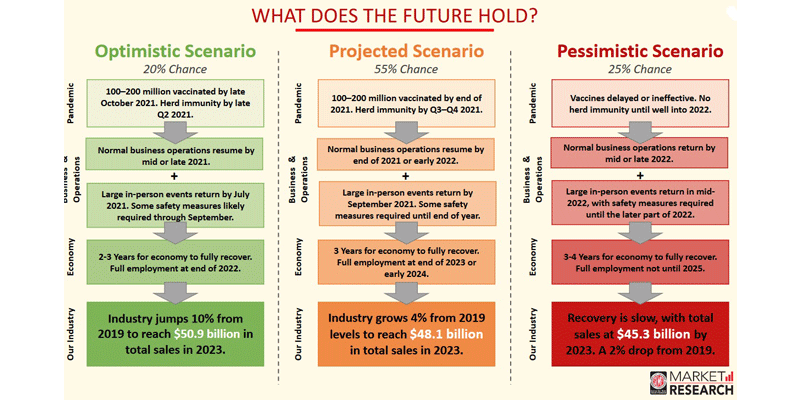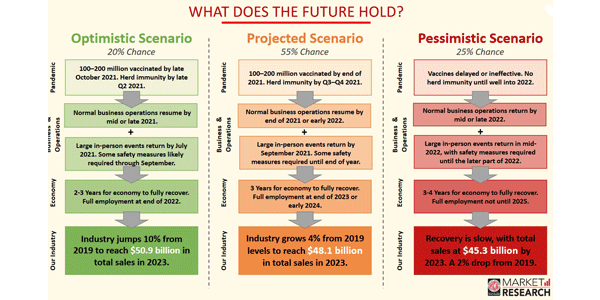Factoring in vaccine rates, economic trends, election results, stimulus outcomes and more, the Specialty Equipment Market Association (SEMA) presented its “most likely” projections for when retailers will see more normal business patterns.
A forecast that shows the US reaching herd immunity by Q3-Q4, with normal business operations resuming by the end of 2021/early 2022 is the most likely scenario with about a 55 percent chance of realization (compared to more optimistic or more pessimistic forecasts at 20-25 percent likelihood), said SEMA.
Under this scenario, in-person events would return by September 2021, along with more travel, it said. Most rules and restrictions would likely be lifted later in 2021/early 2022. People would return to more normal office operations.
SEMA’s Manager of Market Research Kyle Cheng noted that consumer saving rates remain almost double what they are typically and there’s a lot of pent up demand for certain goods and services. Average consumers save about 7 percent of their discretionary income. At the height of the lockdown, in April, that number jumped to almost 30 percent. Now it’s hovering around 14 or 15 percent of savings.

What does that mean for the aftermarket?
One scenario presented by SEMA says despite the return of travel later this year, many consumers will still see the car as the safest means of transportation. They will continue to improve on and service their cars.
On the other hand, consumers may spend money on the services that were unavailable to them during the pandemic.
The automotive specialty equipment market had been growing each year by about 4 percent before the pandemic. It saw sales of $46.2 billion in 2019, but it expects to post a dip in sales to $44 billion for 2020. By 2023, the most likely forecast puts the industry at $48.1 billion in sales and a return to 4 percent annual growth.
Based on SEMA’s most likely forecast, the US economy will still take 3 years to fully recover and full employment won’t take effect until the end of 2023 or early 2024.
in April unemployment hit 14 percent, the highest level since the Great Depression. By Q4 2020, unemployment was down to 6.7 percent although it is likely to “get worse before it gets better,” said SEMA in a webinar Wednesday that was led by Gavin Knapp, SEMA Director of Market Research.









